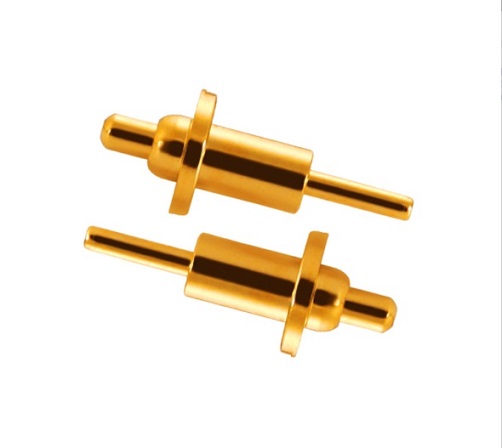What is the lifespan of a pogo pin ?
Introduction: Fundamentals and Importance of Pogo Pins
A Pogo Pin(spring-loaded contact pin) is a precision electronic connector composed of three main parts: a plunger(needle tip), a tube, and a spring.Its core function is to establish stable electrical contact through spring pressure, making it widely used in smartphones, smartwatches, medical devices, and aerospace equipment
. As modern electronics demand miniaturization and high reliability, the lifespan of
Pogo Pin has become a critical factor in device durability. This article explores the determinants of their lifespan, industry standards, and optimization strategies.
I. Structure and Working Mechanism
1. Mechanical Structure
• Plunger: Typically designed with a sloped surface to ensure stable contact with the inner wall of the tube, reducing impedance and enhancing current transmission efficiency.
• Spring: Provides continuous pressure to maintain contact; its material and elasticity coefficient directly affect lifespan.
• Tube: Acts as the housing, requiring high wear resistance and conductivity. Gold plating is often used to improve performance.
2. Operational Principles
During insertion and removal, the spring undergoes repeated compression and release. Each cycle involves mechanical wear and oxidation risks on the electrical contact surfaces, which may lead to contact failure or spring fatigue over time.
II. Key Factors Affecting Lifespan
1. Material Selection
• Spring Material: High-carbon steel or stainless steel offers superior fatigue resistance, enabling lifespans exceeding 100,000 cycles.
• Surface Coating: Gold or nickel plating prevents oxidation and reduces contact resistance, extending electrical durability. For example, advanced electroplating techniques can improve contact reliability by over 30%.
2. Electroplating Process
• Precision plating enhances wear resistance. A gold layer thickness of 0.5–1.5 microns balances cost and performance.
3. Usage Environment and Frequency
• Temperature and Humidity: High temperatures and humidity accelerate oxidation, leading to coating degradation.
• Insertion Frequency: Frequent use accelerates spring fatigue. Industrial standards typically require a minimum lifespan of 50,000 cycles.
III. Industry Testing Standards and Lifespan Evaluation
1. Mechanical Durability Testing
• Automated equipment simulates insertion cycles to monitor spring elasticity loss and contact resistance changes. For instance, the MIL-STD-1344 standard mandates post-test resistance fluctuations below 10%.
2. Environmental Testing
• High-temperature/humidity (e.g., 85°C/85% RH) and salt spray tests validate coating stability.
3. Real-World Applications
• Smartphones: Flagship models require Pogo Pins to withstand 100,000 cycles for charging port reliability.
• Medical Devices: Double-layer gold-nickel coatings are used in disinfectant-exposed environments, pushing lifespan requirements beyond 200,000 cycles.
IV. Strategies to Extend Lifespan
1. Design and Manufacturing Optimization
• Sloped Plunger Design: Reduces friction and wear.
• Spring Preload Control: Finite element analysis (FEA) optimizes pressure distribution to avoid localized overload.
2. Surface Treatment Innovations
• Nanocoating: Diamond-like carbon (DLC) coatings increase wear resistance, extending lifespan by 50%.
• Selective Plating: Gold plating only on contact areas reduces costs.
3. Environmental Management
• Sealed designs (e.g., ASUS Zenbook Duo’s dustproof concept) minimize contamination.
V. Future Trends
1. Material Innovations
• Titanium alloys or ceramic composites may enhance corrosion resistance and mechanical strength.
2. Smart Lifespan Prediction
• Sensors monitoring contact resistance changes enable failure prediction (e.g., in EV battery systems).
3. Sustainability
• Cyanide-free plating and recyclable materials align with EU RoHS directives.
Conclusion:The lifespan of a Pogo Pin depends on materials, manufacturing processes, and environmental conditions. Current industry benchmarks range from 50,000 to 200,000 cycles, but ongoing innovations in nanotechnology and intelligent monitoring continue to push these limits. Future advancements will further solidify Pogo Pins’ role in high-reliability and miniaturized applications
